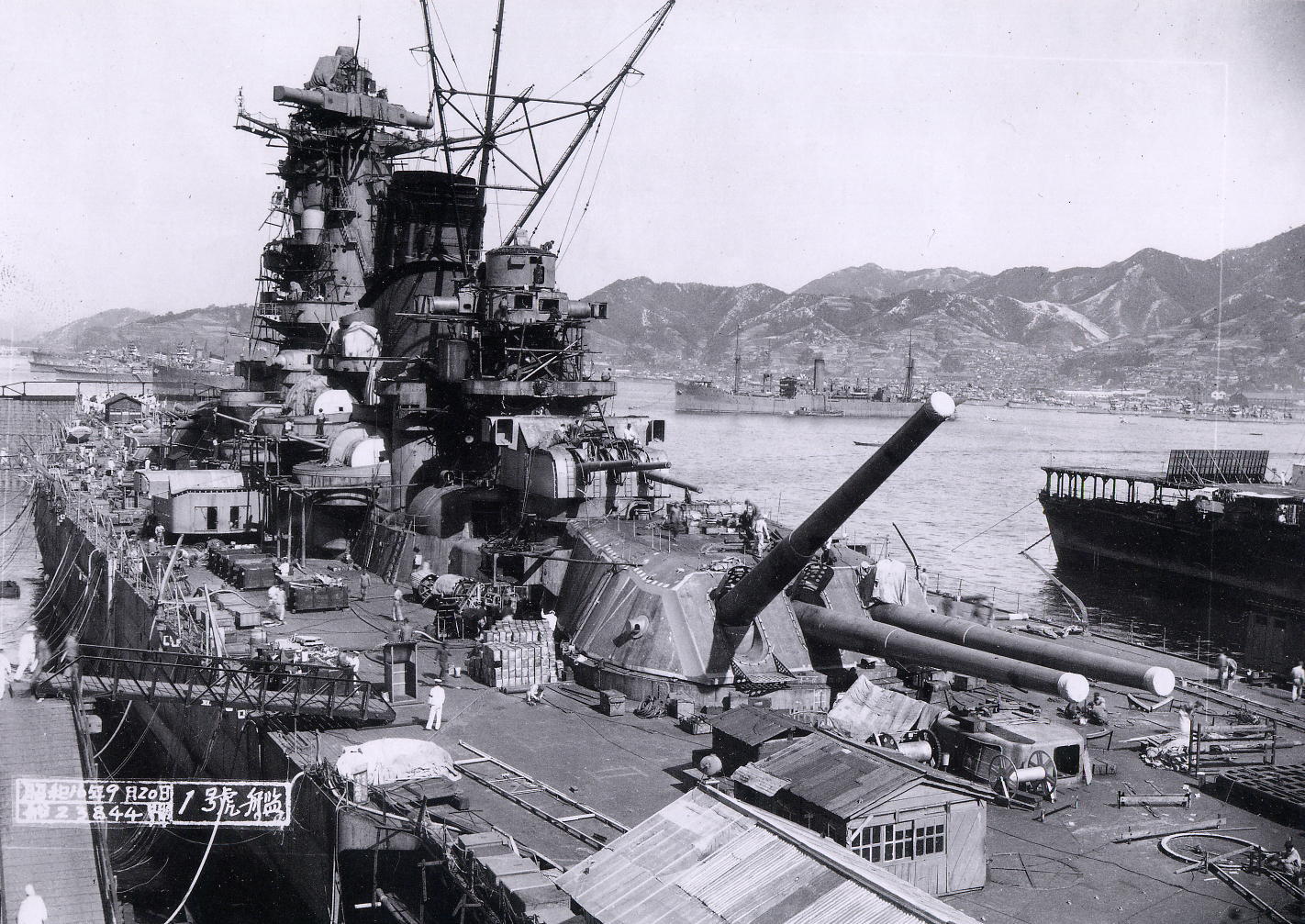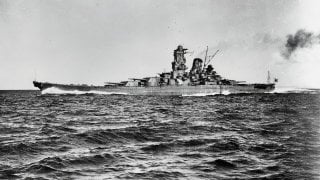Yamato-Class: The Biggest and Baddest Battleships Ever
Imperial Japan’s Yamato-class battleships were known as the biggest vessels of their kind to ever sail the seas. Before the Second World War, these massive dreadnoughts were introduced as the most powerfully armed battleships ever constructed.
Summary and What You Need to Know: Following Japan's withdrawal from the Washington Naval Treaty in 1934, it began constructing the Yamato-class battleships to counter the U.S. Navy's numerical advantage.
-Commissioned in 1941 and 1942 respectively, the Yamato and Musashi were the largest and most powerfully armed battleships ever built, featuring unprecedented 18-inch guns capable of firing 3,200-pound armor-piercing shells over 25 miles.
-Despite their thick 16-inch armor designed to withstand heavy aerial bombardment, both ships were sunk during World War II.
-The Musashi was lost in the Battle of the Sibuyan Sea in 1944 after numerous bomb and torpedo hits, while the Yamato met a similar fate in 1945, highlighting the vulnerability of even the most heavily armored ships to air power.
Yamato-Class Battleships: Japan's Naval Giants That Couldn't Withstand Air Power
Following World War I, the major Allied powers convened to determine a potential end to the naval arms race. France, Italy, Japan, the UK and the U.S. eventually became signatories of the Washington Naval Treaty.
Also known as the Five-Power Treaty, this agreement limited the construction of battleships, aircraft carriers and battlecruisers by the signatories and the total displacement allowed per ship.
For a few years each nation abided by the guidelines outlined in this treaty, however, when the Japanese government shifted towards ultranationalist militancy in the early 1930’s, this shifted.
By 1934, Japan withdrew from the League of Nations and renounced its previous treaty obligations, including the Washington Naval Treaty.
In 1941, Japan formally commissioned the Yamato battleship just one week after the attack on Pearl Harbor. Intended to counter the U.S. Navy’s numerically superior ship fleet, the Yamato was designed to be able to engage multiple enemy ships simultaneously.

The Musashi was commissioned in 1942 and was later modified to serve as the flagship of Imperial Japan’s Combined Fleet.
Perhaps the most important feature incorporated on both Yamato-class battleships was the 18-inch gun fitted on them. Prior to this, the largest naval guns ever mounted on similarly-capable vessels measured 16 inches in size.
These extra two inches resulted in a much larger weight. In fact, the Yamato-ships’ armor-piercing shells weighed 3,200 pounds each and could be fired more than 25 miles at 40-second intervals.
The U.S. Navy’s own battleships could not match these formidable numbers. The Yamato and Musashi vessels were also designed for aerial bombardment. Engineers made the main armor deck on each ship thick enough to withstand the aftermath of heavy bombs dropped from high altitudes. The Japanese really believed that the sixteen inches of armor placed across the ships made them indestructible.
The sinking of the Yamato and Musashi:
In October 1944, Musashi was sunk after receiving 17 bombs and 19 torpedo hits during the Battle of Sibuyan Sea, resulting in the deaths of 1,023 sailors. The Yamato also suffered a similar fate.
On April 7, 1945, Yamato was sunk after receiving 10 torpedoes and 7 bomb hits from American carrier aircraft. When she capsized, 2,498 of the 2,700 crew members on board were killed. Obviously, the sixteen-inch armor incorporated on each ship was not enough to protect from the onslaught of bombs and torpedoes launched by American forces.
About the Author: Maya Carlin
Maya Carlin, National Security Writer with The National Interest, is an analyst with the Center for Security Policy and a former Anna Sobol Levy Fellow at IDC Herzliya in Israel. She has by-lines in many publications, including The National Interest, Jerusalem Post, and Times of Israel. You can follow her on Twitter: @MayaCarlin.
Image Credit: Creative Commons.


